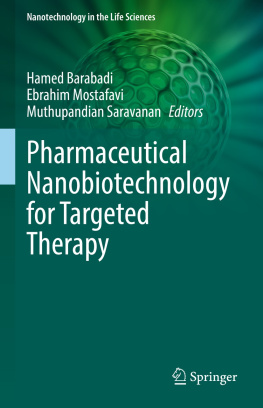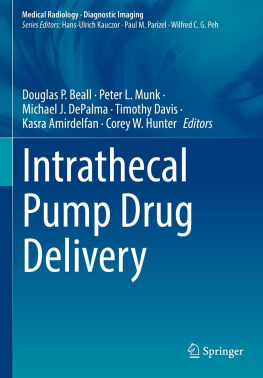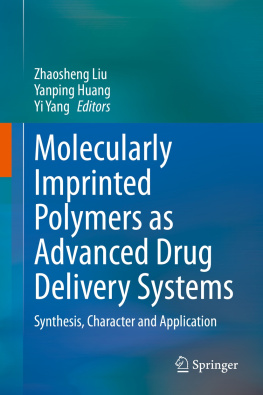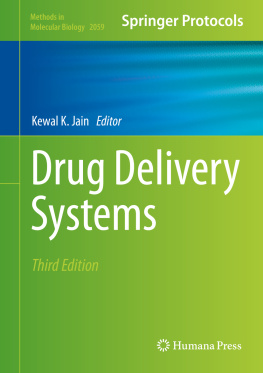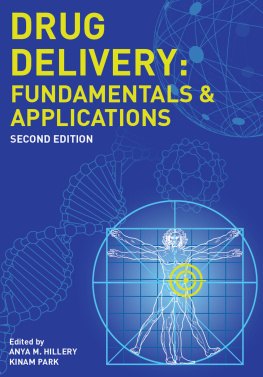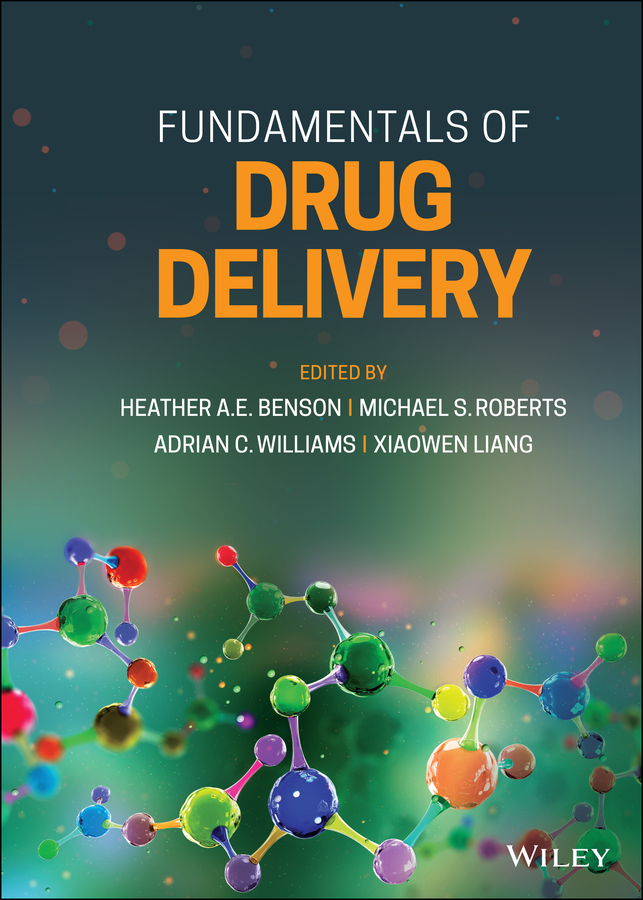
Table of Contents
List of Tables
- Chapter 1
- Chapter 2
- Chapter 3
- Chapter 4
- Chapter 5
- Chapter 6
- Chapter 7
- Chapter 8
- Chapter 9
- Chapter 10
- Chapter 12
- Chapter 13
- Chapter 15
- Chapter 16
- Chapter 18
List of Illustrations
- Chapter 1
- Chapter 2
- Chapter 3
- Chapter 4
- Chapter 5
- Chapter 6
- Chapter 7
- Chapter 8
- Chapter 9
- Chapter 10
- Chapter 11
- Chapter 12
- Chapter 13
- Chapter 14
- Chapter 15
- Chapter 16
- Chapter 17
- Chapter 19
- Chapter 20
Guide
Pages
Fundamentals of Drug Delivery
Edited by
Heather A. E. Benson
Curtin University of Technology, School of Pharmacy, Perth, Australia
Michael S. Roberts
University of Queensland, School of Medicine, Brisbane, Australia
Adrian C. Williams
University of Reading, School of Chemistry, Food and Pharmacy, Reading, UK
Xiaowen Liang
University of Queensland, Faculty of Medicine, Brisbane St Lucia, Australia

This edition first published 2022
2022 by John Wiley & Sons, Inc.
All rights reserved. No part of this publication may be reproduced, stored in a retrieval system, or transmitted, in any form or by any means, electronic, mechanical, photocopying, recording or otherwise, except as permitted by law. Advice on how to obtain permission to reuse material from this title is available at http://www.wiley.com/go/permissions.
The right of Heather A. E. Benson, Michael S. Roberts, Adrian C. Williams, and Xiaowen Liang to be identified as the editors of this work has been asserted in accordance with law.
Registered Office
John Wiley & Sons, Inc., 111 River Street, Hoboken, NJ 07030, USA
Editorial Office
111 River Street, Hoboken, NJ 07030, USA
For details of our global editorial offices, customer services, and more information about Wiley products visit us at www.wiley.com.
Wiley also publishes its books in a variety of electronic formats and by printondemand. Some content that appears in standard print versions of this book may not be available in other formats.
Limit of Liability/Disclaimer of Warranty
In view of ongoing research, equipment modifications, changes in governmental regulations, and the constant flow of information relating to the use of experimental reagents, equipment, and devices, the reader is urged to review and evaluate the information provided in the package insert or instructions for each chemical, piece of equipment, reagent, or device for, among other things, any changes in the instructions or indication of usage and for added warnings and precautions. While the publisher and authors have used their best efforts in preparing this work, they make no representations or warranties with respect to the accuracy or completeness of the contents of this work and specifically disclaim all warranties, including without limitation any implied warranties of merchantability or fitness for a particular purpose. No warranty may be created or extended by sales representatives, written sales materials or promotional statements for this work. The fact that an organization, website, or product is referred to in this work as a citation and/or potential source of further information does not mean that the publisher and authors endorse the information or services the organization, website, or product may provide or recommendations it may make. This work is sold with the understanding that the publisher is not engaged in rendering professional services. The advice and strategies contained herein may not be suitable for your situation. You should consult with a specialist where appropriate. Further, readers should be aware that websites listed in this work may have changed or disappeared between when this work was written and when it is read. Neither the publisher nor authors shall be liable for any loss of profit or any other commercial damages, including but not limited to special, incidental, consequential, or other damages.
Library of Congress CataloginginPublication Data
Names: Benson, Heather A. E., editor. | Roberts, Michael S., 1949 editor.
| Williams, Adrian C., 1963 editor. | Liang, Xiaowen, editor.
Title: Fundamentals of drug delivery / edited by Heather A. E. Benson,
Michael S. Roberts, Adrian C. Williams, Xiaowen Liang.
Description: Hoboken, NJ : Wiley, 2022. | Includes bibliographical
references and index.
Identifiers: LCCN 2021033395 (print) | LCCN 2021033396 (ebook) | ISBN
9781119769606 (cloth) | ISBN 9781119769651 (adobe pdf) | ISBN
9781119769675 (epub)
Subjects: MESH: Drug Delivery Systems | Drug Administration Routes
Classification: LCC RS199.5 (print) | LCC RS199.5 (ebook) | NLM QV 785 |
DDC 615/.6dc23
LC record available at https://lccn.loc.gov/2021033395
LC ebook record available at https://lccn.loc.gov/2021033396
Cover Design: Wiley
Cover Image: shutterstock\Yurchanka Siarhei
Preface
Effective, controlled drug delivery has the potential to greatly impact the therapeutic outcome, clinical benefit, and safety of drugs in a wide range of diseases and health conditions. There are a large number of potentially useful drugs with limited effectiveness and/or safety concerns due to poor drug delivery. This may occur because a physiologically relevant concentration is not delivered to the target site, does not remain in contact for a sufficient period, or causes adverse effects because of the resulting high blood concentrations associated with indiscriminate release. Controlled drug delivery systems are designed to carry the drug and release it at the target site in a timely manner, facilitating its absorption and optimizing its physiological action. An effective controlled drug delivery system improves efficacy and safety by controlling the rate, time, and place of drug release within the body, thereby minimizing dose requirements and the potential to interact with nontarget body sights that can contribute to undesirable side effects. Drug delivery has evolved from relatively simple systems to modern technologies designed to personalize medicines that have biologically precise drug release in response to realtime monitoring of body parameters.
Controlled drug delivery system development is rapidly evolving with an everincreasing focus on advanced technologies that bring together a wide range of skilled professions including pharmaceutical scientists, chemical, mechanical, and electrical engineers, chemists, physicists, and clinicians. It is an exciting field that has helped to advance clinical outcomes in almost every health condition, ranging from negating the need for coldchain storage thus allowing medicines to be transported to the most remote parts of the world, to precision targeting of drugs in cancer treatment. This book is designed to provide an insight into the fundamentals of drug delivery and the important processes in the development of controlled drug delivery systems.
The book is divided into three parts.
) introduces the concept of drug delivery and provides a perspective into the challenges, opportunities, and fundamental processes involved in the development of controlled drug delivery systems. It includes a historical perspective and a peek into the future of drug delivery. There is a focus on the drug development process, including the selection of pharmaceutical candidates and evaluation of their physicochemical characteristics with emphasis on the relevance to dosage form design. The role and application of mathematical modeling and the influence of drug transporters in pharmacokinetics and drug disposition complete this section.
Next page

